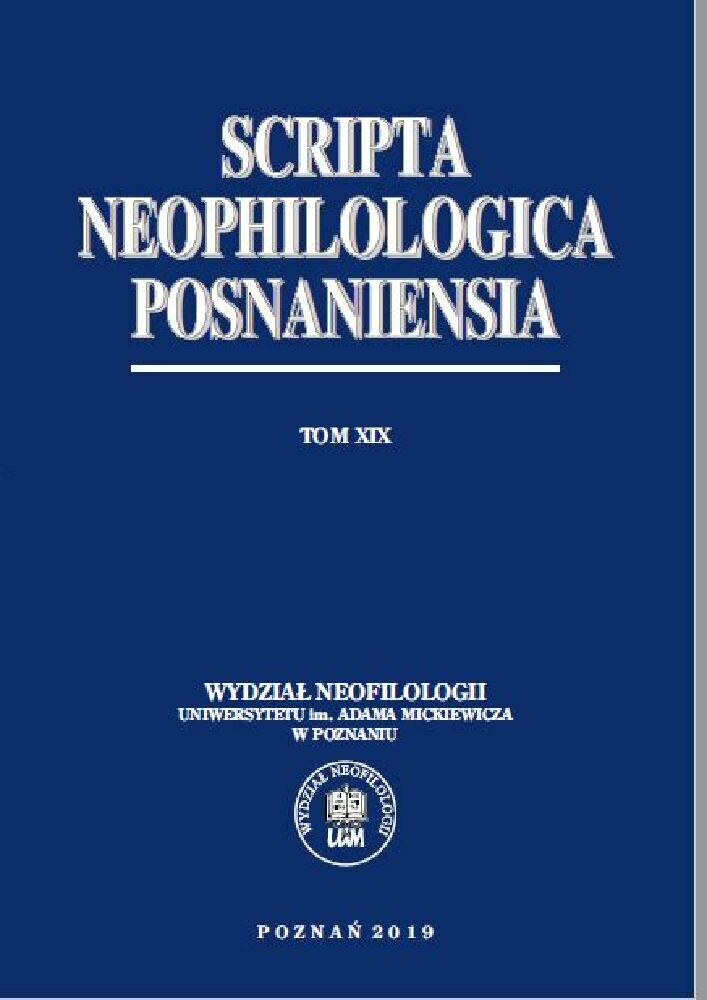Abstrakt
Nur-Sultan (until recently called Astana), is the capital of Kazakhstan, which in 1998 was moved from Alma-Ata to a small village located in the central part of the country in the middle of a vast Kazakh Steppe. The capital is mostly known for its severe climate, futuristic and technologically advanced architecture, as well as for organizing international political and economic events, resulting from the growing power of Kazakhstan in Central Asia. The aim of this paper is to: (1) find out whether, and if so to what extent, the word Astana spurs interest in two British and two American newspapers representing right-wing and left-wing political alignment; (2) check how Astana is evaluated by these newspapers (whether in negative, positive, or neutral terms); (3) observe whether there are any differences between the conservative and the liberal papers as well as between the British versus American press. The material was gleaned from a ca. 35 billion word timestamped press corpus. Four subcorpora (altogether ca. 650,000 words in size) were created based on articles retrieved from The Daily Telegraph, The Guardian, Chicago Tribune and The New York Times, published between 2014-2018. The results have shown that the predominant themes in both British and American press include the ultramodern architecture of Astana and political events (international summits) organized in the capital. The majority of comments have positive or neutral evaluation.
Bibliografia
Baker, P. 2006. Using corpora in discourse analysis. London: Bloomsbury.
Baker, P., Gabrielatos, C. and T. McEnery. 2013. Discourse analysis and media attitudes. Cambridge: Cambridge University Press.
Bączkowska, A. 2016. ”Korpusowa analiza dyskursu związanego z tematyką imigracji w brytyjskiej prasie opiniotwórczej”. Conversatoria Linguistica 10. 7-25.
Bączkowska, A. 2019a. “Obraz Polaka imigranta w brytyjskiej prasie opiniotwórczej: analiza korpusowa i krytyczna analiza dyskursu”. In: Benenowska, I., Bączkowska, A., and W. Czechowski (eds). Komunikowanie wartości – wartość Komunikowania. Bydgoszcz: UKW. 103-116.
Bączkowska, A. 2019b. “A corpus-assisted critical discourse analysis of “migrants” and “migration” in the British tabloids and quality press”. In: Lewandowska-Tomaszczyk, B. (ed.). Contact and contrast in cultures and languages. Cham: Springer Publishing.
Bednarek, M. 2006. Evaluation in media discourse: analysis of a newspaper corpus. London.
Bednarek, M., and H. Caple. 2017. The discourse of news values: how news organizations create newsworthiness. Oxford: Oxford University Press.
Biber, D., Connor, U. and T. Upton. 2007. Discourse on the move: using corpus analysis to describe discourse structure. Amsterdam: John Benjamins.
Bloomfield, A. 2005. “Boom time in the city that taste forgot”. The Daily Telegraph. Available at: https://www.telegraph.co.uk/news/worldnews/asia/kazakhstan/1504866/Boom-time-in-the-city-thattaste-forgot.html.
Bušta, J., and O. Herman. 2017. “JSI Newsfeed Corpus”. In: The 9th International Corpus Linguistics Conference. Corpus Linguistics 2017 Conference, University of Birmingham, 25-28 July 2017.
McEnery, T. and A. Wilson. 1996. Corpus linguistics. Edinburgh: Edinburgh University Press.
Kilgarriff ,A., Rychly, P., Smrž , P. and D. Tugwell. 2004. “The sketch engine. information technology”. Available at: https://www.sketchengine.eu/bibliography-of-sketch-engine/
Spence, M. 2009. “Internationalisation of entrepreneurship in Kazakhstan”. International Journal of Globalisation and Small Business 3.3. 252-262.
